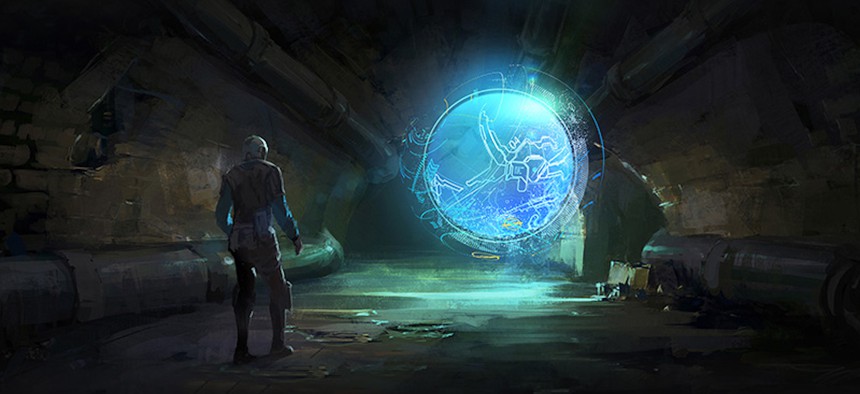
Art for the NSIN challenge: "EVENTS Seeing into the Unknown - Situational Awareness in Dense Urban Environments Online Challenge" NSIN
The Pandemic Shut Down Other DoD Innovation Efforts, So We Took Ours Online
Hackathons sponsored by the National Security Innovation Network are going virtual, starting with an urban-warfare challenge.
The pandemic has all but shut down many of the ways the Defense Department uses to spur innovation. Enter the online hackathon.
For several years, our DoD program office — the National Security Innovation Network, or NSIN — has hosted in-person hackathons: rapid-design events in which we give participants a challenge and a deadline, often just 48 hours or less. NSIN has held these events across the country, bringing students and startups to work with operators and warfighters. For many of the former, a hackathon may be their first opportunity to work on a national-security problem. For the latter, it is a chance to find and apply new perspectives and knowledge from outside the Department’s bureaucratic and rigid mentalities. Previous hackathons have generated ways to counter small drones for Army Futures Command, coordinate mass evacuations for the National Guard, automate the capture of maintenance data, and bring better computers to special operators.
After the pandemic hit, we moved our efforts online. In May and June, we held “Seeing into the Unknown: Situational Awareness in Dense Urban Environments.” The challenge was: develop systems or components that can help military operators and first responders by collecting data about an interior space, then transmitting, interpreting, and presenting it quickly and intuitively to enable rapid decision-making.
The problem is real: the U.S. Army is preparing to fight in a world of megacities. By 2050, the UN foresees a global population of 9.7 billion, 68 percent in urban environments. For first responders, higher urban density creates greater risks associated with structure fires, subway tunnel collapses, and police actions; for military operators, it creates challenges for keeping soldiers safe. NSIN worked with the 75th Ranger Regiment, the Combat Capabilities Development Command Armaments Center, and the Army Mad Scientist Initiative to develop this hackathon.
Related: The Pentagon Is Ignoring Small Innovators
Related: Three Tweaks to Foster Innovative Defense Products
By hosting the challenge online, NSIN was able to pull in teams from across the United States, the United Kingdom, and Singapore. More than 200 people signed up, and 44 concepts were submitted for consideration. Judges from across the department picked five finalists to continue developing their solutions with other elements of the DoD.
Given the continued remote-work environment, the hackathons—even a virtual iteration of them—can generate vital solutions for warfighters across the department. Interested parties around the globe can iterate on the problem, unimpeded by the pandemic via online platforms. This program is evidence itself of NSIN’s success in calling on and appealing to innovators, subject matter experts, and technologists to solve real-world problems — all in the name of safety and national security.
NEXT STORY: Ep. 72: What “China” means in 2020



